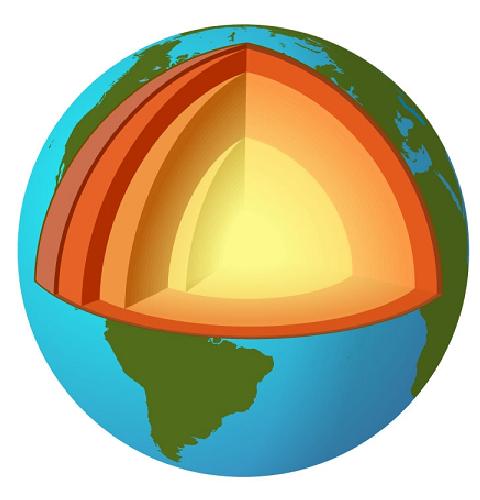Exploring the depths, the article was recently published in the prestigious journal NATURE

What are the exact characteristics of the liquid hidden in the depths of the earth and what changes does it undergo during its flow in the depths? Answers to these questions can be found in an article that recently appeared in the prestigious journal Nature. The article was written by Dr. Ronit Kessel from the Institute of Earth Sciences at the Hebrew University together with Prof. Max Schmid, Prof. Peter Ulmer and Dr. Thomas Petka from the Swiss Federal Institute of Technology in Zurich.
In this unique study, the researchers characterize for the first time the fluids released from plates that land into the Earth, at depths of 180-120 km and at temperatures ranging from 700 to 1200 degrees Celsius. In order to characterize the liquids that participate in each and every phase of the water cycle inside the sphere, the researchers developed a new experimental-analytical method according to which the composition of each phase that the liquid passes through can be tested directly in experiments at high pressure and temperature.
According to Dr. Kessel "Although the Earth is a solid planet, water plays a central role in the development of its structure. The presence of water affects the depth, the temperature and the composition of the molten rocks that occur deep within the 'bowels' of the earth.
"The Earth is made up of plates that move relative to each other. When two plates collide strongly with each other, one of them may push the other into the depths of the earth, carrying with it fluids into the depths of the mantle (the area between the earth's crust and the core) in the form of minerals, which contain water (hydric minerals)."
Like a sponge that releases its water as it is pressed, so the hydric minerals release fluids as the slab enters depths between 200-50 km, accelerating the melting of the mantle rocks and creating a melt called magma which eventually erupts into volcanoes. Volcanic eruptions are what recreate the lithosphere (earth's crust). The Aegean islands in southern Greece, for example, are volcanoes formed in this way (the most famous of which is the island of Santorini which erupted in the 16th century BC).
During the eruption, the volcanoes emit many gases, such as carbon dioxide, into the atmosphere. These gases cause condensation of cloudiness and rains, and thus in essence - water that is carried inward to the depths of the earth affects the amount of precipitation above the surface of the globe. On top of that, the liquids deep in the earth contain a lot of dissolved material that they transport from place to place. The mobility of water in the depths causes the movement of various elements from place to place, including elements of high economic importance, such as chromium, nickel and vanadium.
The researchers' work focused on the amount of water released from the slab that lands in the depths, the amount of dissolved material that the slabs contain and the timing at which they are released from the slab and transferred to the mantle rocks.
The results of the study show that up to depths of 180 km there are two different types of fluids. One, formed at relatively low temperatures, is a liquid rich in water (70-90%) with only a small amount of dissolved matter. The second liquid is magma that is rich in dissolved matter and only 10-30% of it is water. The trend is formed at high temperatures while melting the landing plate.
Beyond a depth of 180 km there is only one type of liquid component called supercritical fluid. The liquid and trend at depths of up to 180 km have a definite character. Beyond 180 km, it is no longer possible to distinguish between liquid and trend. A supercritical fluid has a changing character. This phenomenon also exists in water. Above a certain pressure and temperature, liquid and vapor cannot be distinguished but we have steam.
The researchers found that the different elements have different degrees of solubility in different types of liquids. That is, fluid, magma, and supercritical fluid transport elements in different ways from the plate that lands to the rocks of the mantle and from there to the lava that erupts in the volcanoes.
The researchers emphasize that it is necessary to distinguish between magma and fluid and supercritical fluid, in order to characterize the water cycle in the mantle and to better understand the relationship between the landing plate and volcanic eruptions, as well as how much material is transported in the Earth's interior.
